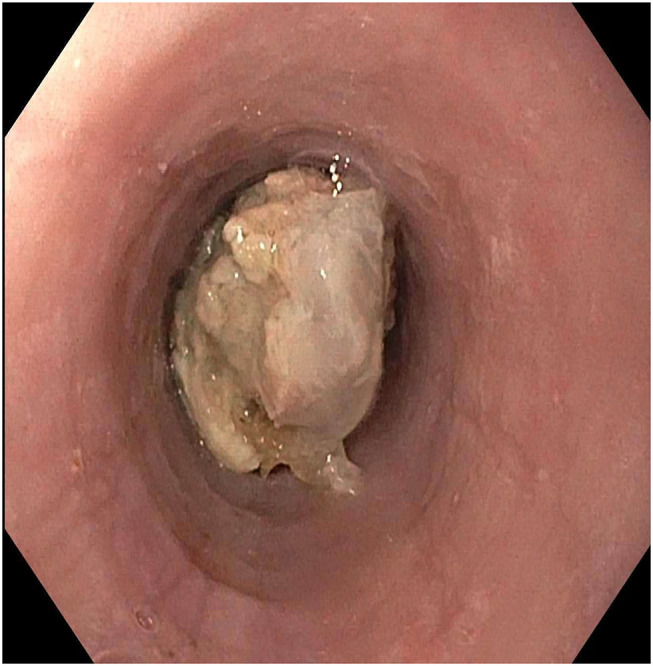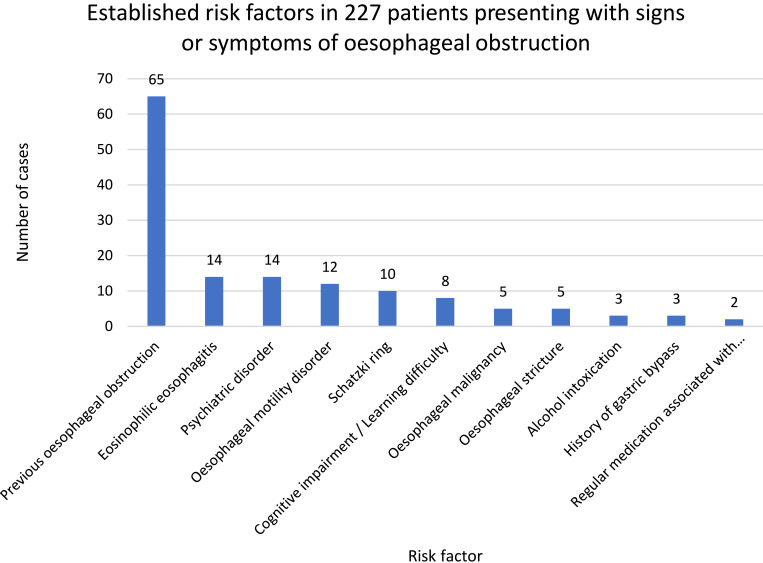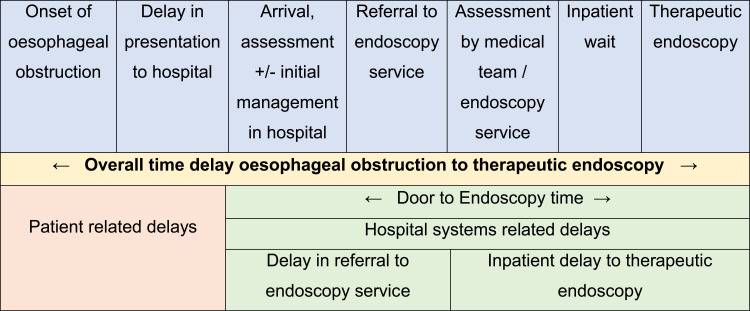Management of Adults with Acute Oesophageal Soft Food Bolus and Foreign Body Obstructions at Two New Zealand District Health Boards.
IF 2.5
Q2 GASTROENTEROLOGY & HEPATOLOGY
Clinical and Experimental Gastroenterology
Pub Date : 2021-06-04
eCollection Date: 2021-01-01
DOI:10.2147/CEG.S300240
引用次数: 0
Abstract
Aim 1. Investigate the characteristics of adult patients presenting with acute oesophageal soft food bolus obstruction (SFBO) and impacted foreign body (IFB) at two New Zealand district health boards (DHBs). 2. Review current management against international guidelines for SFBO and IFB. Methods A multicentre retrospective search of the Provation® endoscopy database identified patients presenting with acute oesophageal obstruction. Utilising electronic patient records, key data points including patient demographics, risk factors, pre-endoscopic medical therapies utilised, diagnostic radiological investigations performed and endoscopic complications were identified. Key timepoints and delays in the patient’s hospital journey from oesophageal obstruction to therapeutic endoscopy were recorded. The probability of failing to undergo therapeutic endoscopy for SFBO within the timeframes advised in clinical guidelines as a result of a delay in referral to the endoscopy service was calculated. Results Over a cumulative 10.5-year period of data collection, 227 oesophago-gastro-duodenoscopies were performed: 195 SFBO, 16 IFB, 16 no obstruction identified. Median patient age was 57 (15–95) years. 143 male and 84 female patients. Radiographs were performed in 50.9% of uncomplicated SFBO. Pre-endoscopy medical therapies were administered in 41.4% of the cases. Median time delay from onset of obstruction to therapeutic endoscopy varied: SFBO 19h 0min, complete obstruction 17h 45min, impacted batteries 1h 15min, and presumed sharp objects 6h 0min. Three patients presenting with a soft food bolus obstruction failed to undergo therapeutic endoscopy due to a delay in referral to the endoscopy service, probability 0.034 (95% CI 0.012, 0.095). Two patients died of complications secondary to oesophageal obstruction. Discussion Oesophageal obstruction is a common gastroenterological presentation. At two large centres in New Zealand, patients waited considerably longer than the recommended timeframe from obstruction to therapeutic endoscopy. Contributing factors included patient-related delays to presentation, hospital system-related factors and delays in referral for endoscopy contributed to by unnecessary pre-endoscopic medical therapies and radiographic investigations. Education about oesophageal obstruction together with robust local guidelines have potential to reduce delays and length of hospital stay, as well as reduce patient discomfort and complications.



新西兰两个区卫生局对急性食道软食物丸和异物阻塞成人的处理。
目的:1。在新西兰两个地区卫生局(dhb)调查以急性食道软食物丸阻塞(SFBO)和撞击异物(IFB)为表现的成年患者的特征。2. 根据SFBO和IFB的国际准则审查当前的管理。方法:对Provation®内窥镜数据库进行多中心回顾性搜索,确定急性食管梗阻患者。利用电子病历,确定了关键数据点,包括患者人口统计数据、风险因素、使用的内窥镜前医疗疗法、进行的放射诊断调查和内窥镜并发症。记录患者从食道梗阻到治疗性内窥镜检查的关键时间点和延误。计算了由于延迟转诊到内窥镜检查服务而未能在临床指南建议的时间框架内接受SFBO治疗性内窥镜检查的可能性。结果:在累积10.5年的数据收集期间,进行了227次食管-胃-十二指肠镜检查:195例SFBO, 16例IFB, 16例未发现梗阻。患者中位年龄为57岁(15-95岁)。男性143例,女性84例。50.9%的无并发症SFBO患者进行了x线片检查。41.4%的病例在内镜检查前接受药物治疗。从发生梗阻到治疗性内镜检查的中位延迟时间各不相同:SFBO 19h 0min,完全梗阻17h 45min,冲击电池1h 15min,推测尖锐物体6h 0min。3例软性食物丸梗阻患者由于转诊延误而未能接受治疗性内镜检查,概率为0.034 (95% CI 0.012, 0.095)。2例患者死于食道梗阻并发症。讨论:食道梗阻是一种常见的胃肠病学表现。在新西兰的两个大型中心,患者从梗阻到治疗性内窥镜检查等待的时间比推荐的时间要长得多。影响因素包括患者相关的延误,医院系统相关的因素以及不必要的内窥镜前医学治疗和放射检查导致的内窥镜转诊延误。关于食道梗阻的教育以及强有力的当地指南有可能减少延误和住院时间,并减少患者的不适和并发症。
本文章由计算机程序翻译,如有差异,请以英文原文为准。
求助全文
约1分钟内获得全文
求助全文
来源期刊

Clinical and Experimental Gastroenterology
GASTROENTEROLOGY & HEPATOLOGY-
CiteScore
5.10
自引率
0.00%
发文量
26
审稿时长
16 weeks
 求助内容:
求助内容: 应助结果提醒方式:
应助结果提醒方式:


